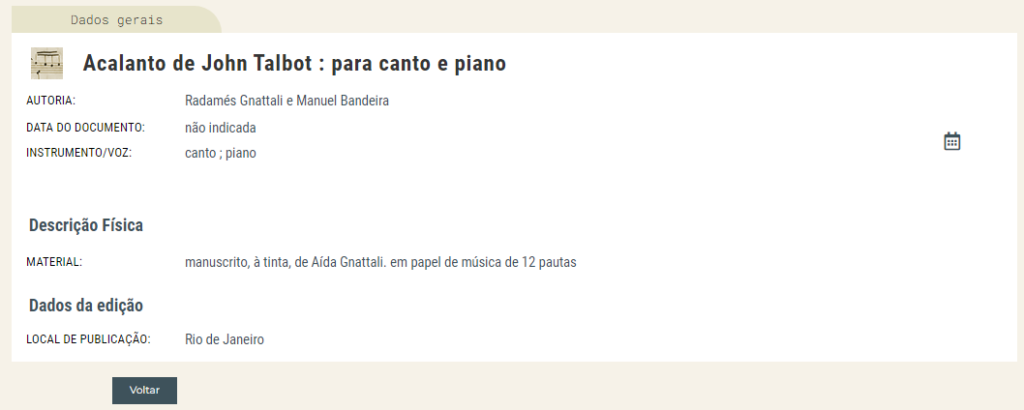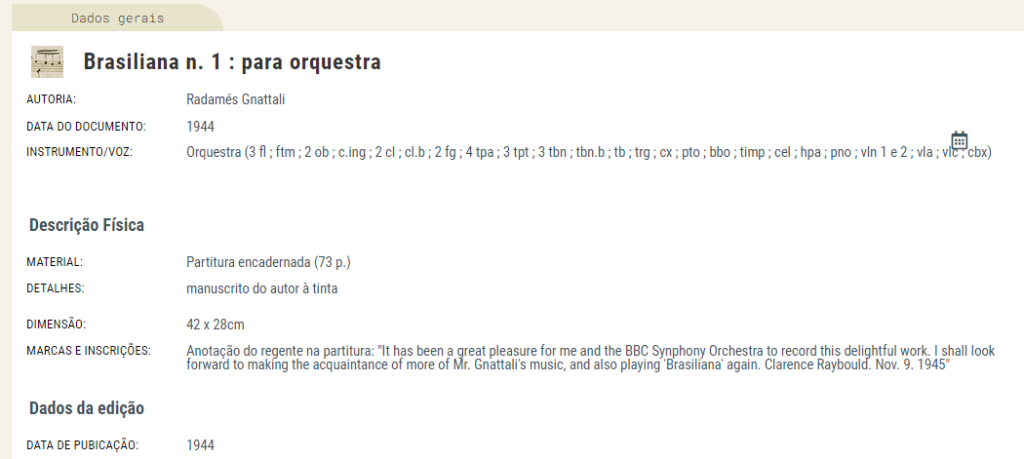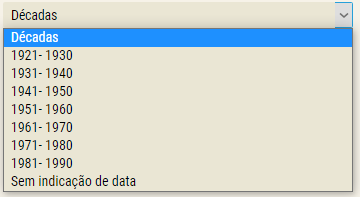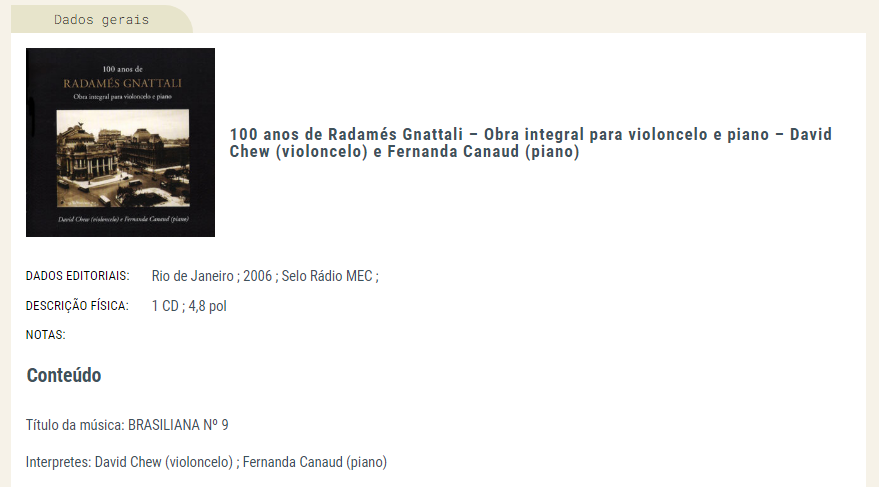About the catalogs (tutorial)
The catalogs are split into 3 different strands:
. Concert Music
. . Popular Music – composition
. . Popular music – arrangement
The catalog section Records offers special data of the main records performed by Radamés or other interpreters of his work.
Useful tips for score search:
I
The Catalog Popular Music > composition contains Radamés’ own compositions and some productions with eventual partners, whose arrangements may be from him and/or other arrangers
II
The catalog Música popular > composiçãocontains compositions by Radamés, with occasional partners, in arrangements by Radamés and other arrangers
III
Before you start a new search, at the FILTROS, click LIMPAR.
IV
There is no cross search! If a title is cataloged within the concert music section it will not be found if you search in thepopular music section, and vice-versa The same will happen if your title is cataloged within the popular music > composition section and you search in popular music > arrangement So, once again, there is no option for crossed searches.
V
Radamés considered as concert music many of his more elaborated choros, sambas and waltzes. Examples of those would be the choro Canhoto and the waltz Uma rosa para o Pixinguinha which, although they may present strong traces of popular music, they are both cataloged within the concert music section. Therefore, should you not find the piece of work of your wish, do not give up. Try a different option.
Searching in the Scores’ catalog
Click on the desired catalog:

figure 1
Your computer screen will be divided in two columns: to the left, a column with the available filters; to the right, a list of all works contained in that section alphabetic order.

When you click any title of that list, you open the catalog card of that piece.

Searching sheet music by Título
Before starting a new search, click LIMPAR.
Write in the space indicated, the title of the piece or any word contained in the title and click on SEARCH. A screen will appear containing one or more pieces referring to the selected title.
VI
Starting the title with a capital or small letter is irrelevant.

Click on one of the titles to see the catalog of the piece.


Searching sheet music by Instrumental/Vocal Formation
Before starting a new search, click LIMPAR.
In the Instrumental/Vocal Formation list, select a formation. By selecting Orchestra, for example, a new filter will be presented with all the orchestra formations contained in the catalog.

One or more pieces of the selected formation will be displayed on the screen, in alphabetical order.

Searching sheet music by Decades
Before starting a new search, click LIMPAR.
In theDecades filter, select the desired decade.

One or more pieces from the selected decade will appear on the screen, in alphabetical order.
figure 17
Click on a piece’s title to view its catalog.
______________________
Doing a search inRecords
Access to Radamés’ discography is via a simple search.
1. cick in Records
figure 18
A listing with all the disks in the catalog will be displayed, in alphabetical order.
figure 19
In the Search space, type the title of a disc or a work (concert or popular music) or the name of an artist and click the magnifying glass or Enteron the keyboard.
Click on one of the items displayed on the screen to see its catalog card.
